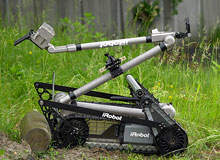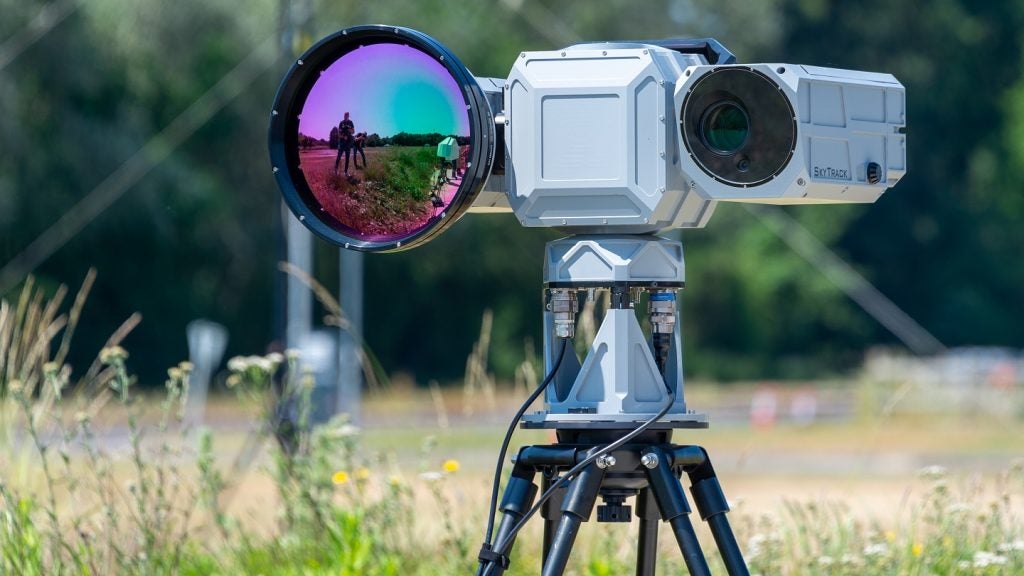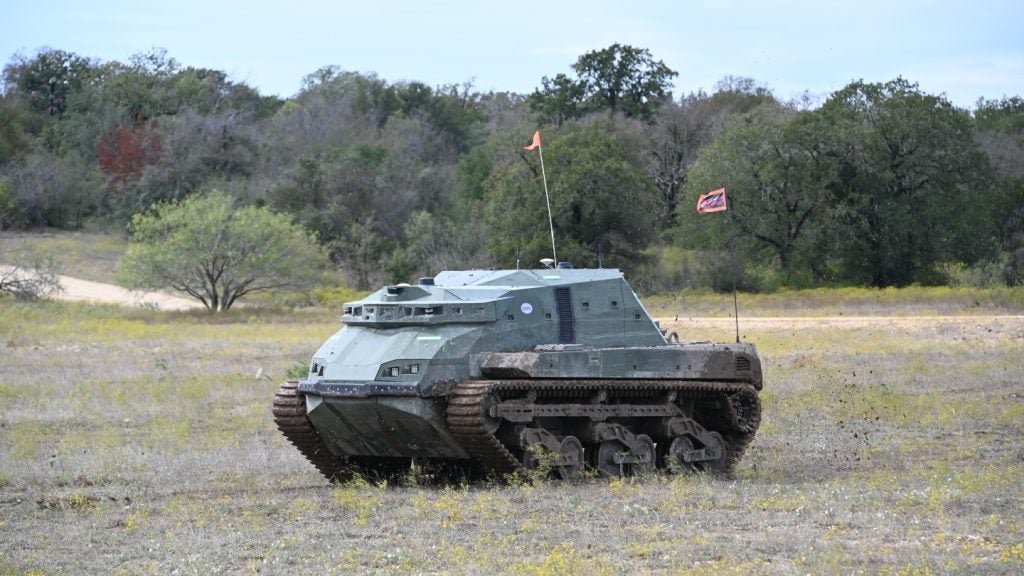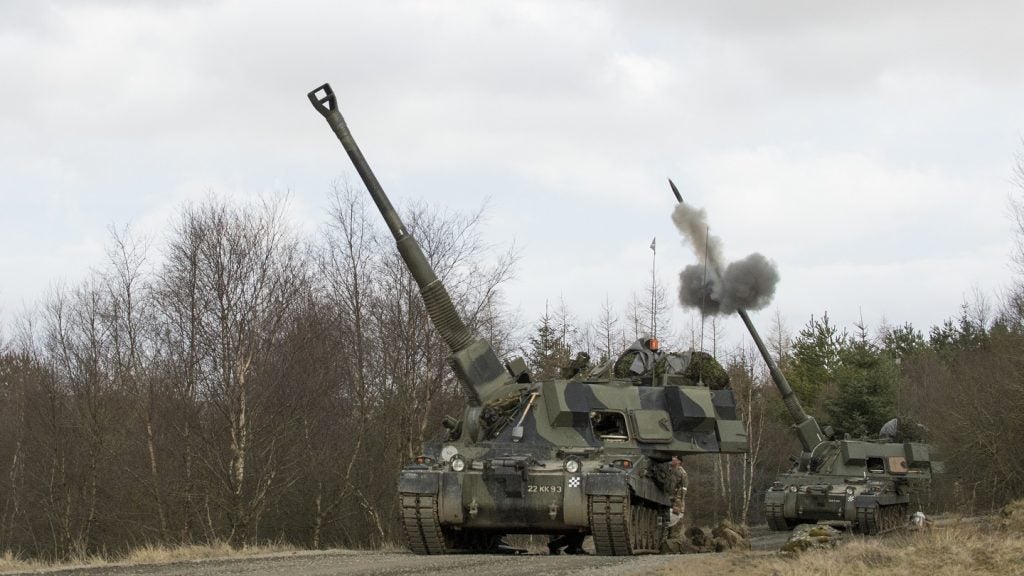
As military missions continue to expand into more testing terrain like that found in the deserts and undeveloped roads of Afghanistan and Iraq, the need for vehicles to navigate such terrain increases. As such, the technology used to propel vehicles through different trains and over obstacles must improve in order to meet demands.
Different vehicles have responded in different ways according to their size and mission. Mine-resistant ambush-protected (MRAP) vehicles used extensively by forces serving in Iraq and Afghanistan, for example, must be rugged enough to transverse over desert terrain whilst protecting soldiers from improvised explosive devices. Automated robots used in bomb disposal missions, like Qinetiq’s Talon or iRobot’s PackBot, must be able to navigate obstacles such as stairs in order to fulfil their missions.
Run flats for MRAPs
The need for MRAP vehicles to maintain movement in the wake of IED blasts or sustained attacks has led to run flat tires becoming a necessary component in order to ensure that soldiers can escape despite flat or defective tires.
This more commonly involves the technology being fitted inside a tubeless tire which is then fitted around the wheel once it is fitted and placed over the wheel’s drop centre. In the event of a blow-out, the deflated tire is supported in order to prevent it from falling into the wheel well. This, in turn, results in the wheel being capable of supporting the weight of the vehicle once flat.
Most vehicles used by armed forces for missions in danger zones with a high prevalence for IED attacks use run flat tires, including Paramount Group’s Marauder and BAE Systems Caiman vehicle.
Protecting robotics
Many developments have also been made in the technology used to propel tracked vehicles, but on a far smaller scale than those used to carry troops.
How well do you really know your competitors?
Access the most comprehensive Company Profiles on the market, powered by GlobalData. Save hours of research. Gain competitive edge.

Thank you!
Your download email will arrive shortly
Not ready to buy yet? Download a free sample
We are confident about the unique quality of our Company Profiles. However, we want you to make the most beneficial decision for your business, so we offer a free sample that you can download by submitting the below form
By GlobalDataThe use of battlefield robots has become increasingly important because of their ability to undertake a range of missions without endangering human life. In order for them to become as useful as possible and able to complete a range of missions, the vast majority of vehicles are use tracks, rather than wheels.
iRobot government and industry division director of engineering Hiten Sonpal said, “The key design feature for the Packbot is its ability to climb stairs. For this to happen, the vehicle has to use tracks rather than wheels because wheeled vehicles generally cannot traverse stairs, so tracks were the preferred option. There are three kinds of tracks, namely rigid, flexible but inelastic and elastic. When applicable, the elastic option is preferred because elastic tracks are easy to install, require simple mechanisms to operate, and are lighter and cheaper for the vehicle and, as such, are used wherever possible.
“The vehicle must be able to complete an array of missions and to do this, it must be able to transverse all kinds of train be it desert, snow or a set of stairs for example. Because of this, wheeled vehicles simply aren’t an option as wheels do not work on certain terrains,” he added.
The PackBot itself comes in many variants, each equipped with tools specific to that task be it for EOD, HazMat or combat engineers as well as first responders and infantry units, with a key design feature being the robot’s ability to stow completely within the design of the tracks.
“One of the major advantages of the design of the PackBot tracks is that some configurations of the vehicle can be completed stowed within the design of the track. This obviously allows it to save space when stowed as everything is inside the outline of the track, but it also results in a highly rugged and sturdy configuration. The PackBot can be thrown out of a vehicle, through a window or onto a variety of surfaces and still be able to operate as required. This has been so successful that the same track technology is now used on all 4,000 unmanned ground vehicles delivered by iRobot,” said Sonpal.
Energy efficiency not a problem
One potential drawback of vehicle tracks over wheels is the fact they are not as energy efficient over their circular rivals. Propelling a vehicle with tracks forward may use more power, but the effects are minimal in a vehicle of the PackBot’s size according to Sonpal.
“Tracks are less energy efficient than wheels, but this isn’t a problem because the energy consumption for the propulsion of the vehicle is relatively low. Almost a third of energy consumption when driving is focused around the electronics of the vehicle, so energy usage for the tracks is typically low in comparison so the loss of energy efficiency is comparatively low. Smaller vehicles also use less energy for propulsion than larger vehicles, so the PackBot isn’t as affected in this respect either,” he said.
Substantial work has, however, been made to improve the energy efficiency and mobility of the track design, including a complete overhaul of the cleats – the rubber belts that fit around the tracks – for the benefit of the vehicle.
Sonpal said, “We pay close consideration to the cleats of the vehicle, or the footings of the track that tract to the floor or terrain. We’ve continually made these better and better and the cleats are now rounded, which makes the vehicle far easier to turn, meaning it gets entangled far less often and has a lower power consumption.”







